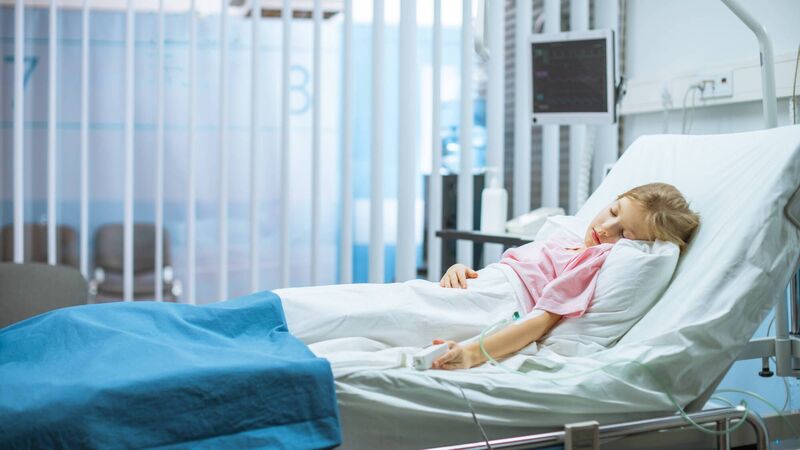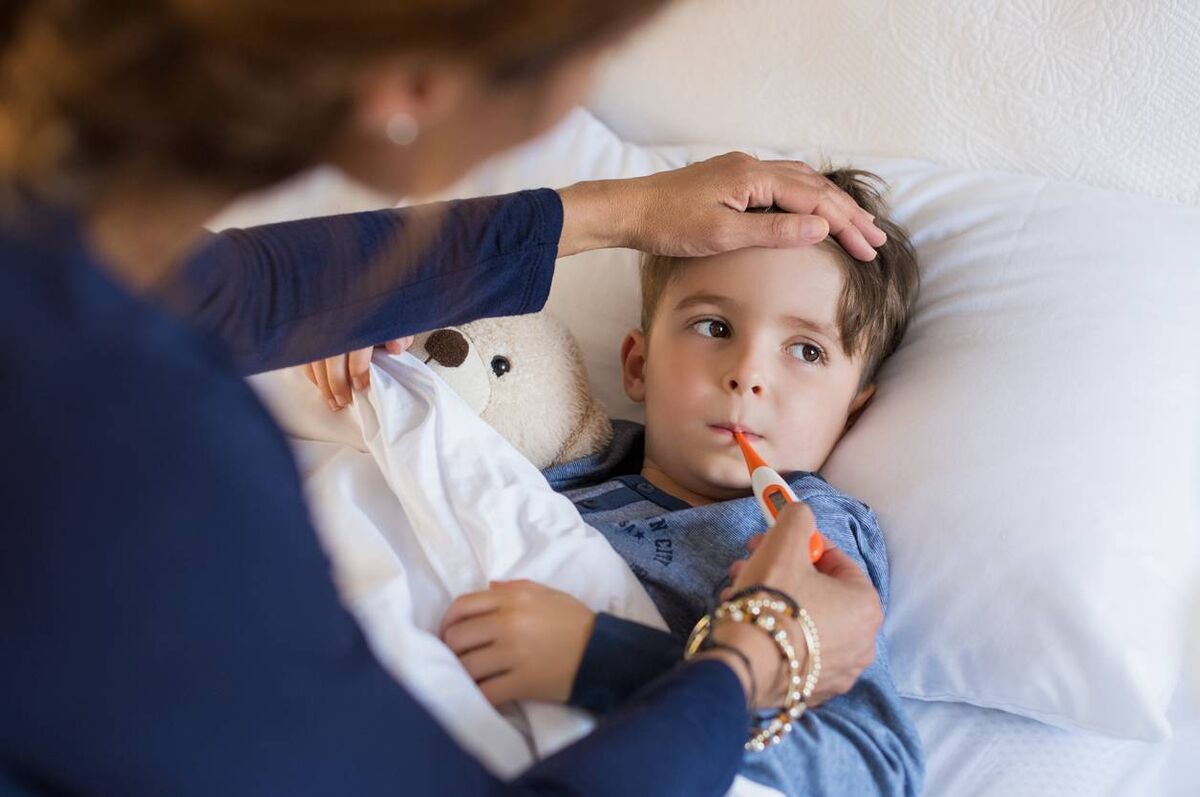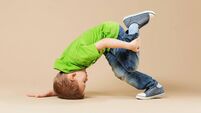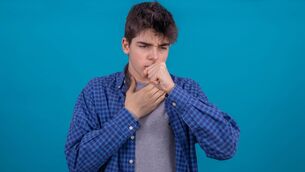The ten times you should always bring your child to the Emergency Department

Rory O'Brien, Paediatric Emergency Medicine Consultant on the times to bring your child to the Emergency Department.
Rory O’Brien, consultant and clinical lead in paediatric emergency medicine at Cork University Hospital (CUH) talks with Rita de Brún about the factors to consider when considering a trip to the emergency department (ED)
If ever there were a word that makes the heart beat faster, it’s ‘emergency.’ When ill or injured children are involved, we have to decide whether a dash to the Emergency Department (ED) is warranted.
Cork University Hospital’s Emergency Department (CUH ED) is the busiest in the country, with around 70,000 annual attendances. This year, demand for services there is - according to Bishopstown man Rory O’Brien - “busier than ever before at this time of year.” He, of course, is particularly well placed to make that observation, as a consultant and clinical lead in paediatric emergency medicine.

“The Emergency Department is under severe pressure and has never been busier or more overcrowded,” he explains. “We will prioritise treatment for the sickest children but significant delays are to be expected for many coming to the ED. If you believe it is safe to take your child to your GP or the local injury unit, please do so.”
For parents, it can sometimes be difficult to decide whether their child’s illness or injury is an emergency or not. To shine light on this common conundrum, Dr O’Brien provided ten top tips, as general guidelines only, with none to be taken in whole or in part as medical advice.
If your child has a fever associated with a stiff neck, head straight to the ED. Parents likely won’t know if a fevered infant has a stiff neck and it is not recommended that they try to establish whether this is the case. But red flags for a small baby include irritability and being very unsettled and in clear discomfort. Normally when a child cries or is very unsettled, they settle when picked up and comforted. But sometimes if they’re very sick, that doesn’t work, and this might be a sign to go to the ED.
This is another combination of symptoms that warrants a speedy visit to the ED. A non-blanching rash is one that doesn’t disappear or fade when you put pressure on it. This test can be done by rolling a clear glass tumbler across the rash.
Any baby under 3 months with a fever (38 degrees Celsius or above) should be brought to the ED. While most are caused by viruses, some will be caused by infection. A digital thermometer placed under the arm tends to give a more reliable reading, particularly in babies, than those of the infrared or auricular (ear) type.
If your child has a convulsion for the first time when they have a fever, you should come to the emergency department. Febrile convulsions occur in approximately 3% of the healthy population and are not associated with any long term ill effects, however, if this has never happened your child before, a doctor should see your child to make sure that there is nothing serious that might have caused the seizure.
To determine if a child is experiencing severe breathing difficulty, check for a lot of ‘sucking in’ in the neck or stomach area. Also, in the rib cage, breast plate or sternum areas. If that’s happening and looks severe, visit the ED. At this time of year children often have some level of breathing difficulty and there can be some ‘sucking in’ at the ribs, particularly if the child is small. If those children are not distressed and in your opinion, not in trouble, contact a GP. If a child has blue lips or is very lethargic, call for an ambulance.
If they are consuming less than half a normal feed portion, that is not enough, especially if they’re babies. Breast-feeding mothers
will get a sense that they’re not anywhere near emptying their breasts when feeding. That can be a red flag.
In addition to amounts consumed, pay attention to how well babies are wetting their nappies. Usually, they wet very frequently - often once an hour on a good day. An unwell baby should at the very least be partly wetting the nappy at least once every six hours. If the interval is over six hours, call your GP. If the nappy is not wet in a 12 hour period, an ED visit is necessary.
Gastroenteritis is common at this time of year. Usually, a child with vomiting and/or diarrhoea is able to absorb some of the fluids they’re taking. They need emergency help if they’re very lethargic or not producing urine or enough urine see No. 6. These are two objective signs they need more fluids.
So, if a child is not weeing, or if a nappy is not being wet, as earlier described, dehydration may be the cause. If you have serious concerns of serious illness visit the ED. For moderate concerns, contact a GP.
Moderately unwell children who are a bit lethargic, will usually, while lying on a couch or bed, look around and take notice of you and what’s going on. If they don’t, this may be a sign of serious lethargy, indicating serious illness and warranting a trip to the ED.
Less than 1 per cent of the children with head injuries we see at CUH ED are assessed as having serious sequelae. Nearly every child we see with such an injury returns to normal.
Bring your child to the ED if, after a head injury, they vomit more than twice or are acting in a way that’s not normal for them. The latter may manifest as repetitive questioning, drowsiness, or being slow to respond to questions.
A child complaining of a head injury after a significant fall certainly merits a visit to the ED. For a small child, a fall of one metre or over warrants an ED visit. For children of walking age, a significant fall might be one of one and a half metres or over.
A child’s response to a fall is significant. Those experiencing bad headaches or drowsiness should always be brought to the ED, as should those who behave unusually. In short, if a child is drowsy or vomiting a lot, or if they are complaining of a bad headache after falling from a significant height, you should bring them in.
Parents might be reassured to know that in most cases when we see children for head injury, we establish that a CT scan is unnecessary. As there is a small amount of radiation involved in CT scans, we don’t like to do them unless necessary. So we balance the benefits and the risks and follow strict procedures to establish whether one is required.
If a child develops an obvious deformity after a fall, the likelihood is that the limb is broken and a trip to the ED is needed. If necessary, a shirt can be fashioned into an effective temporary sling.
Other tell-tale signs of limb injury warranting a trip to the ED, include a change of skin colour in the injured limb, or significant swelling or abnormal sensation at the site of the injury.
In older children, ankle rolls and other sprains are common and should be seen by a GP. Only if there’s a real concern that something’s broken should you visit the ED in these instances.










